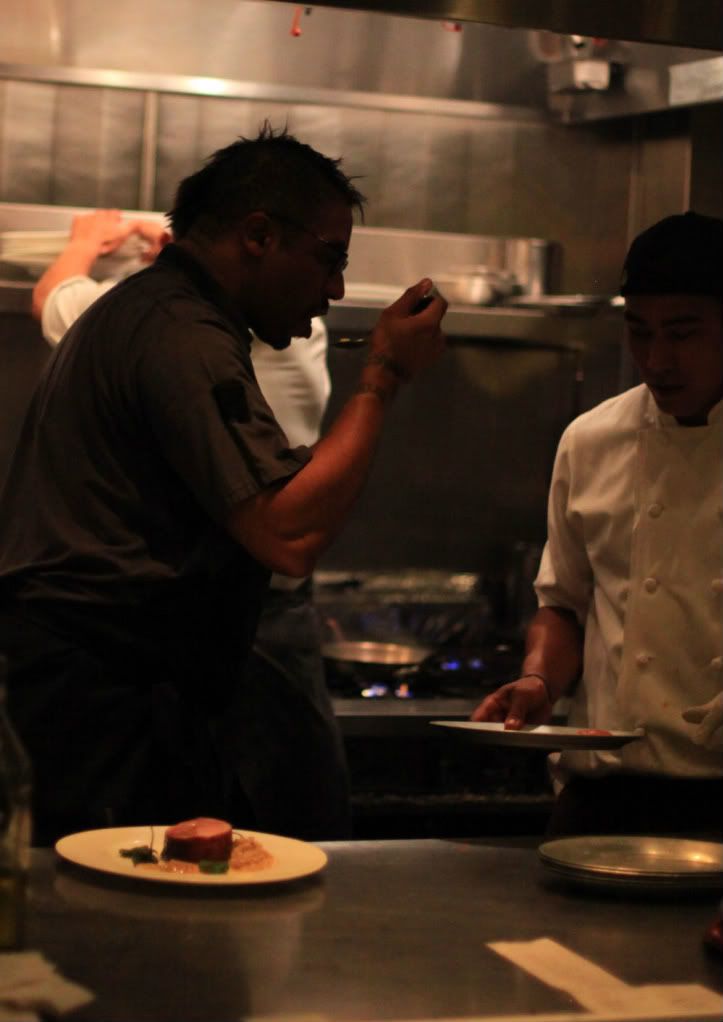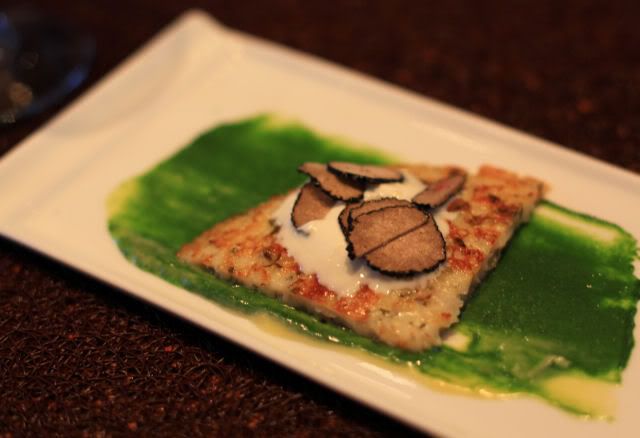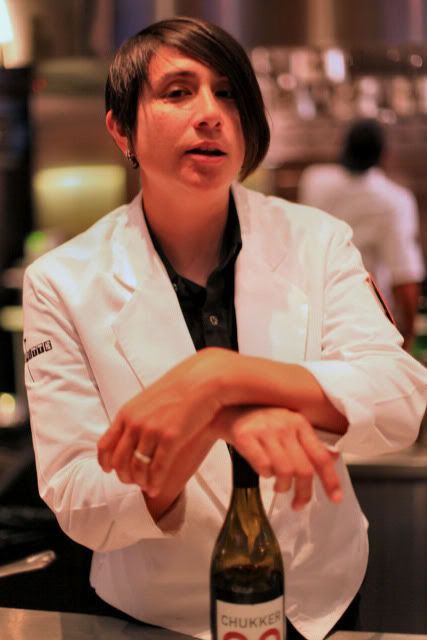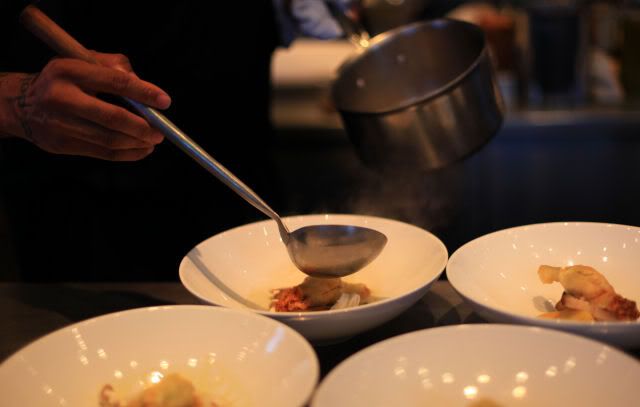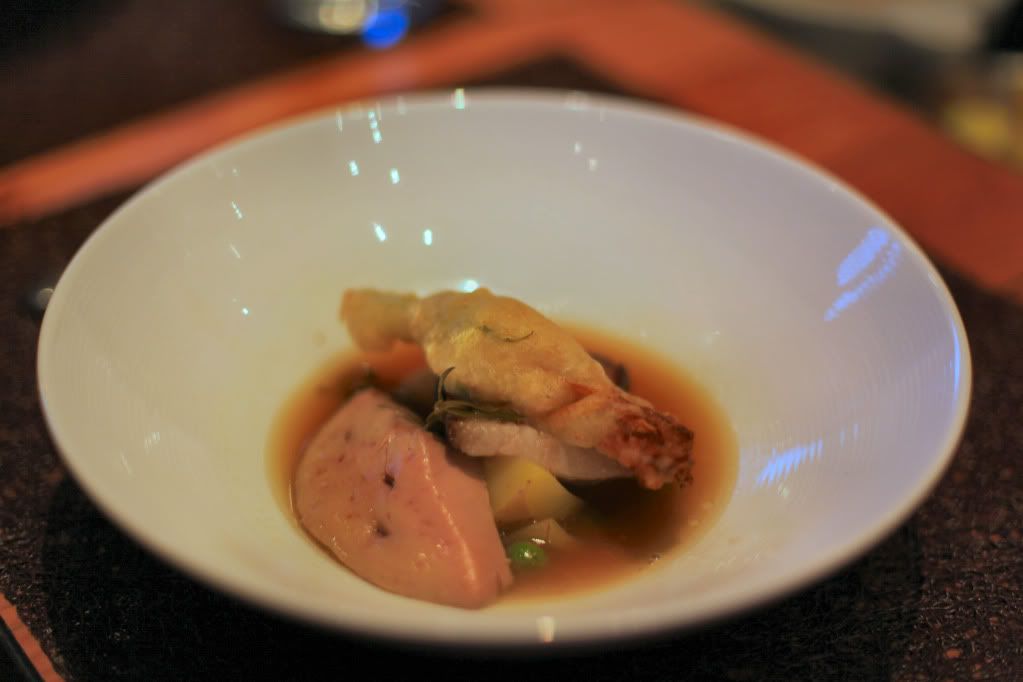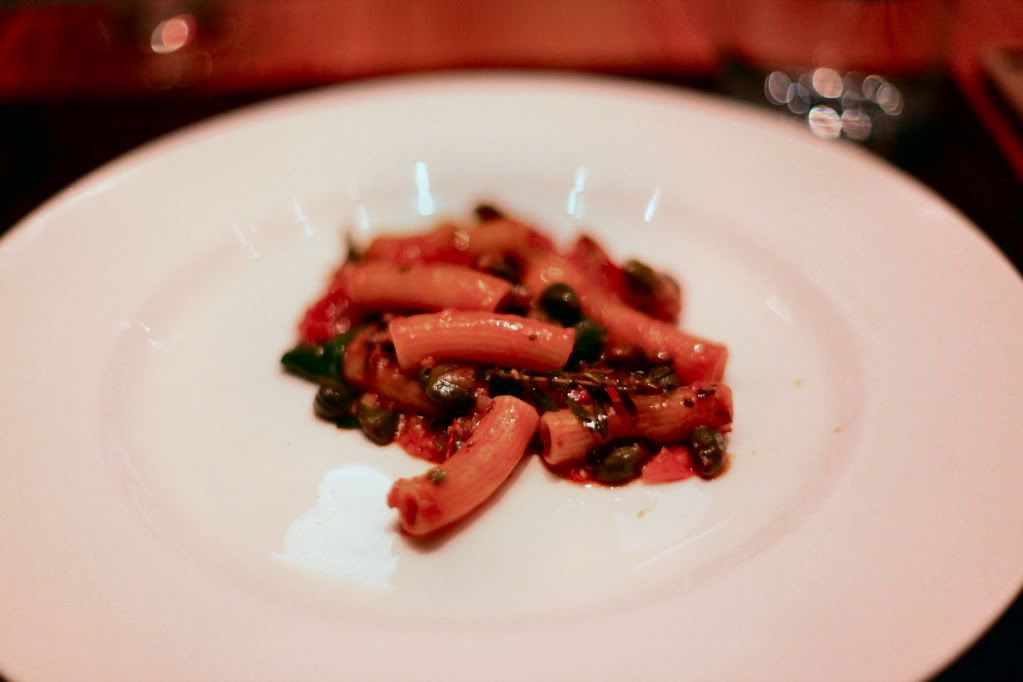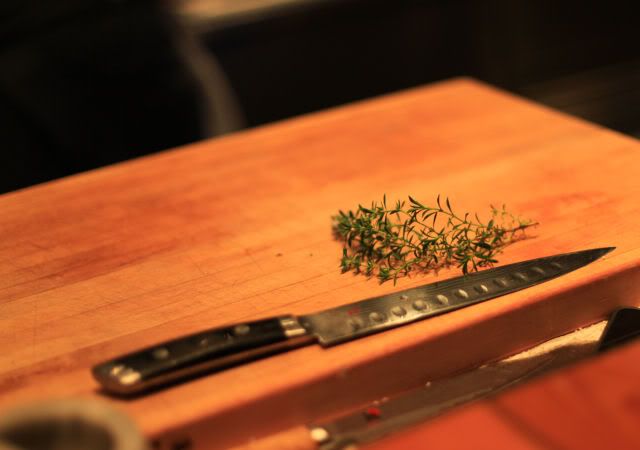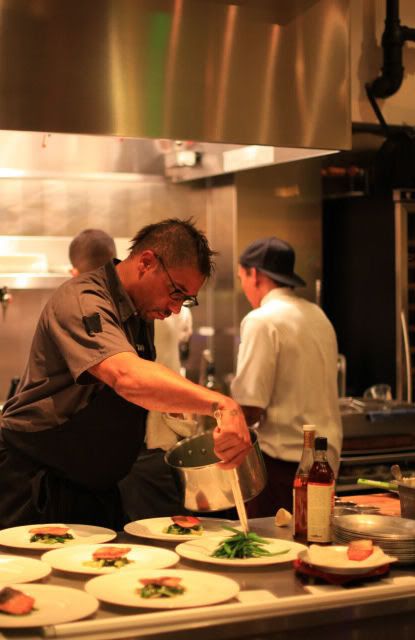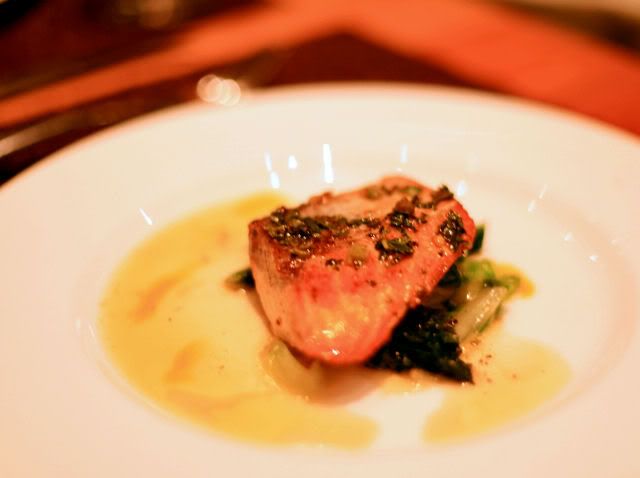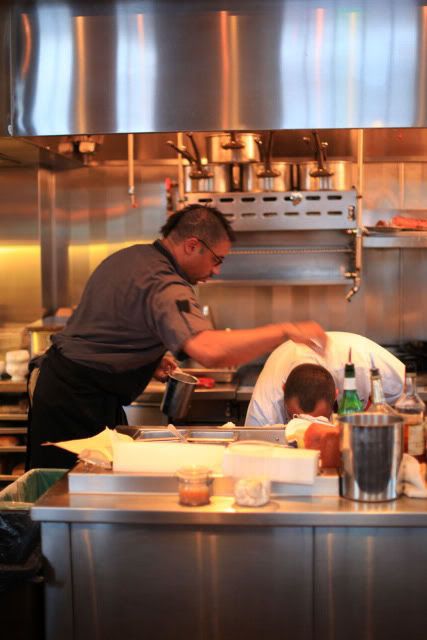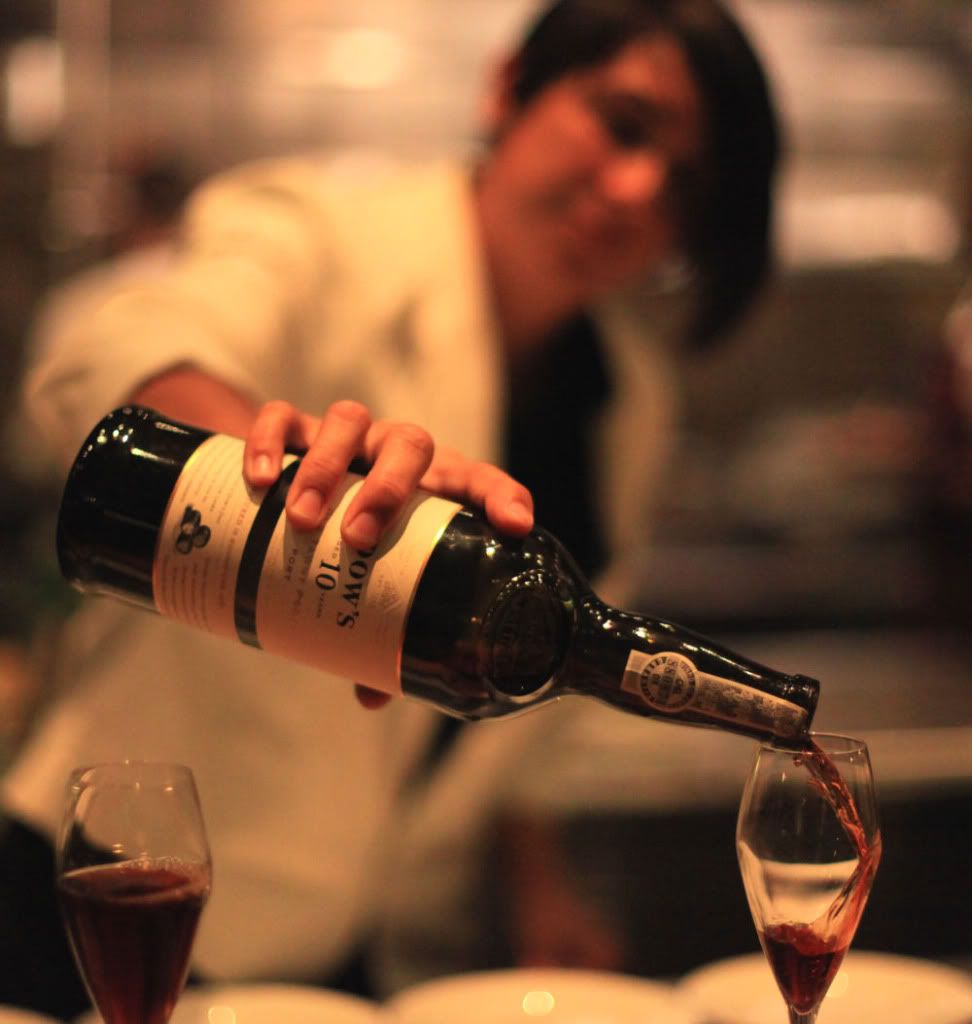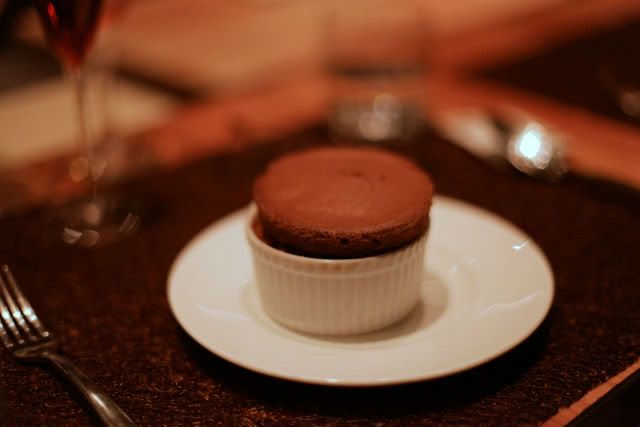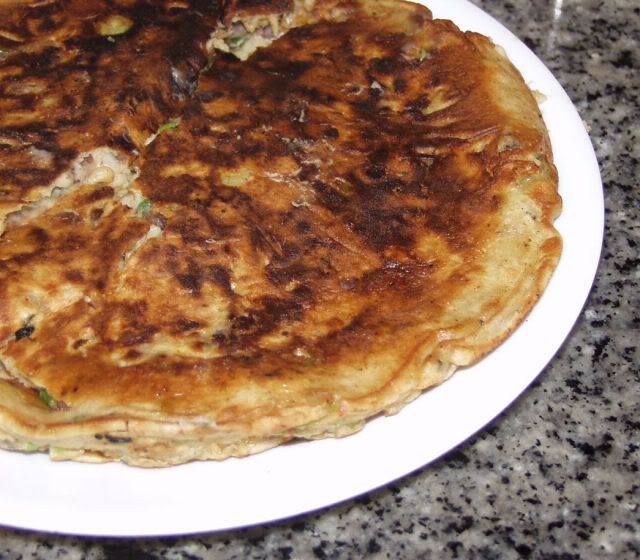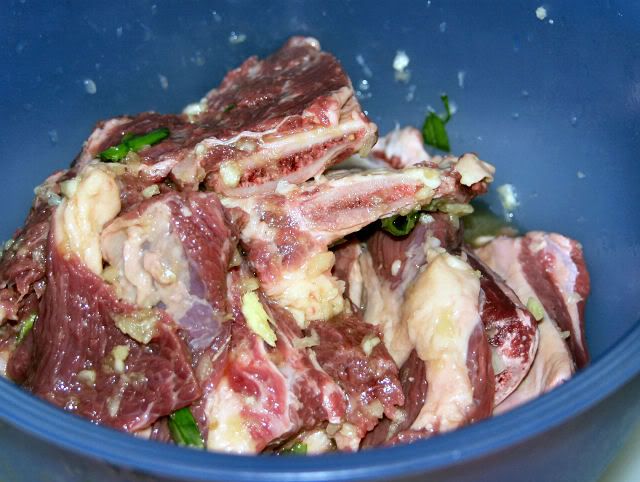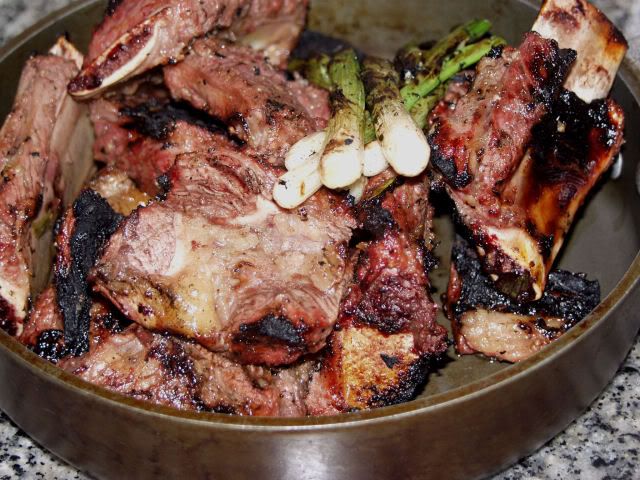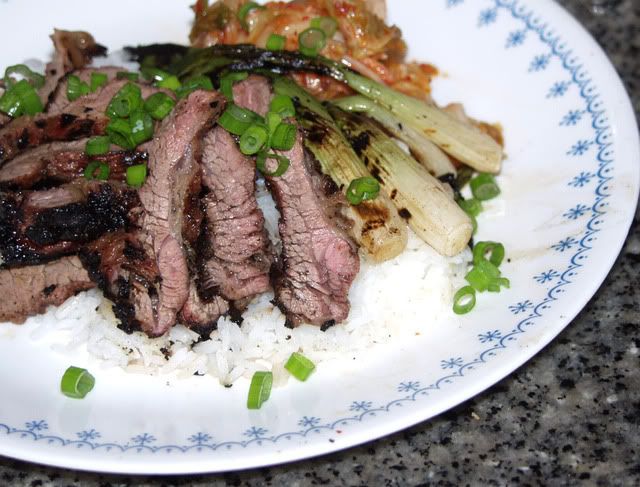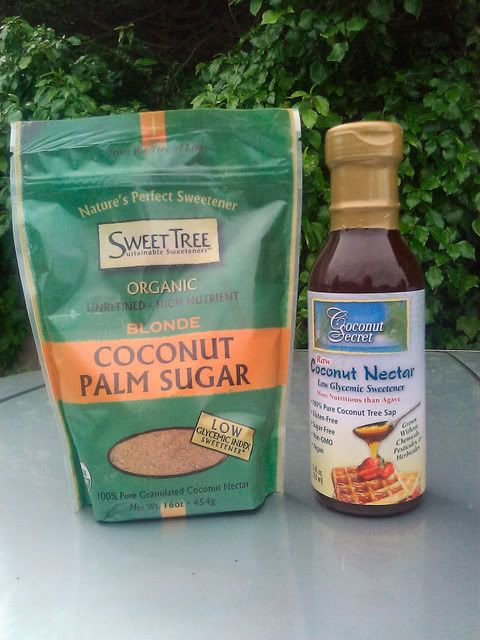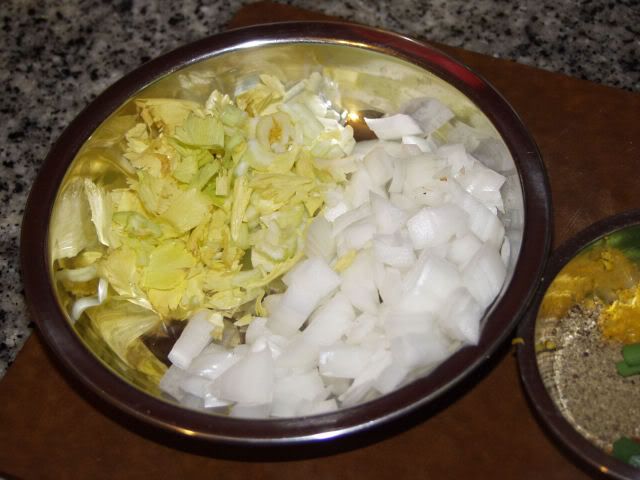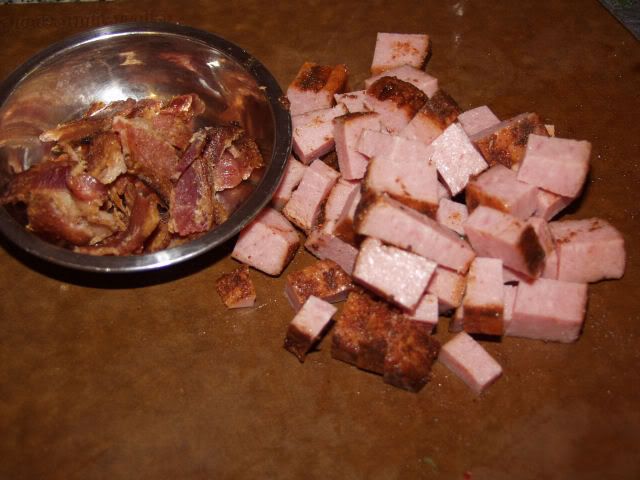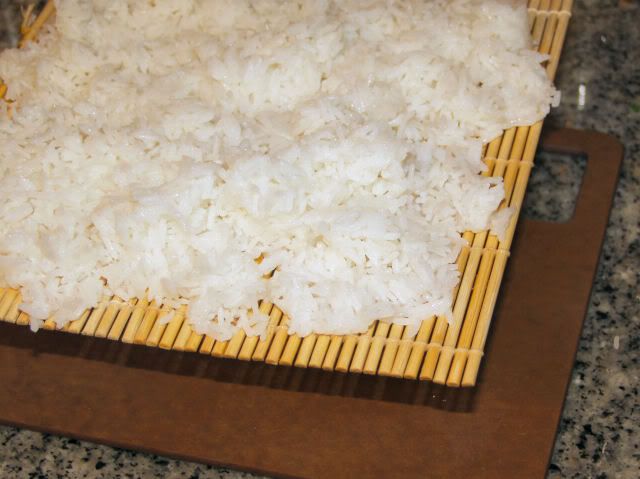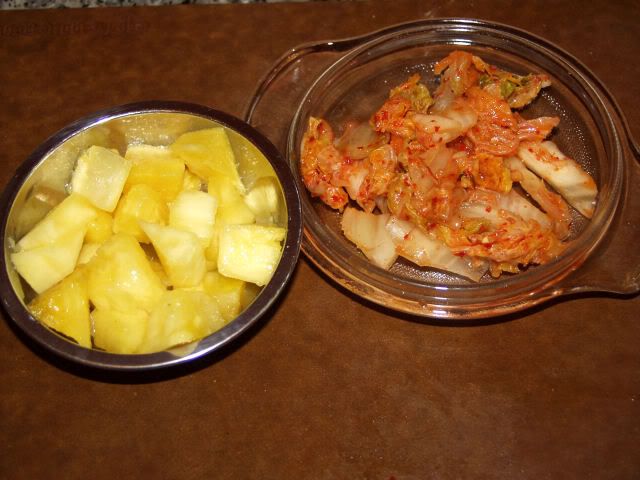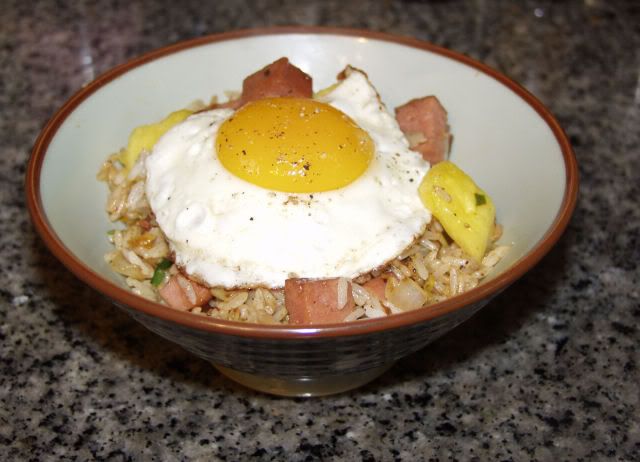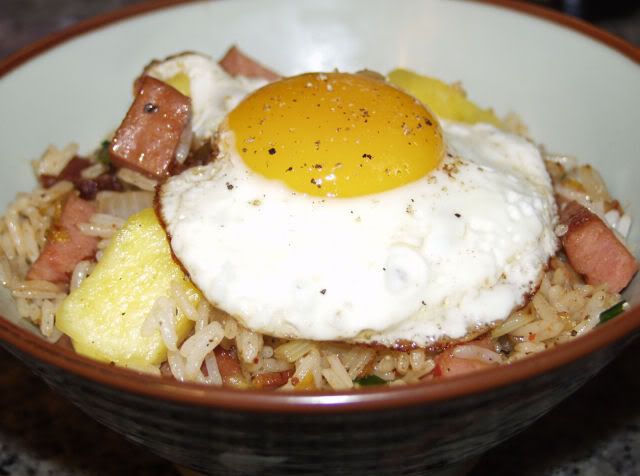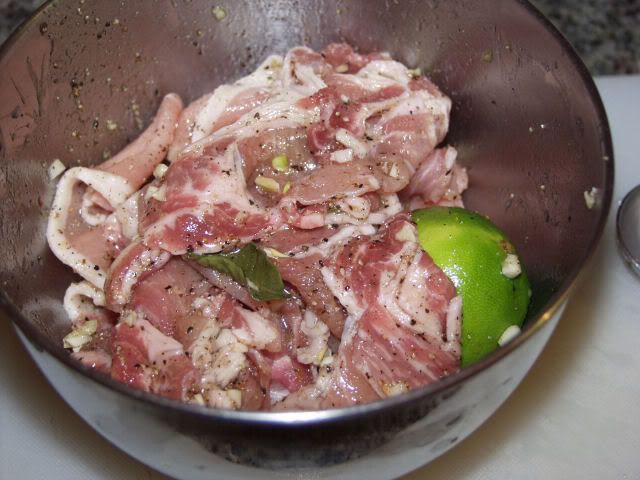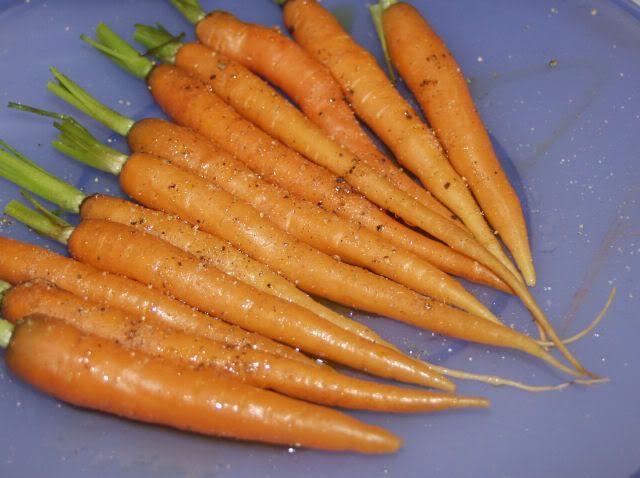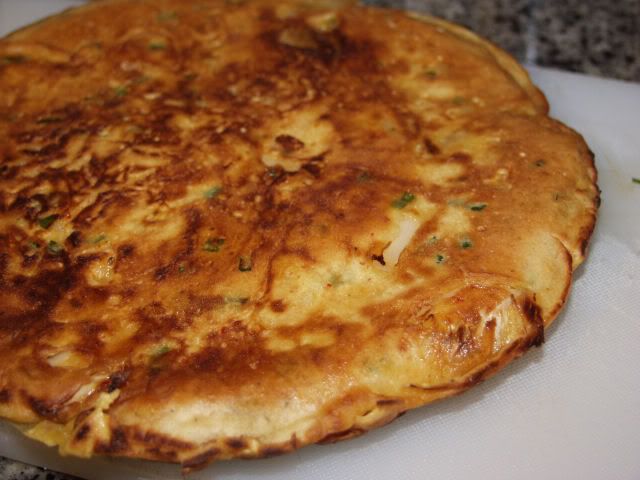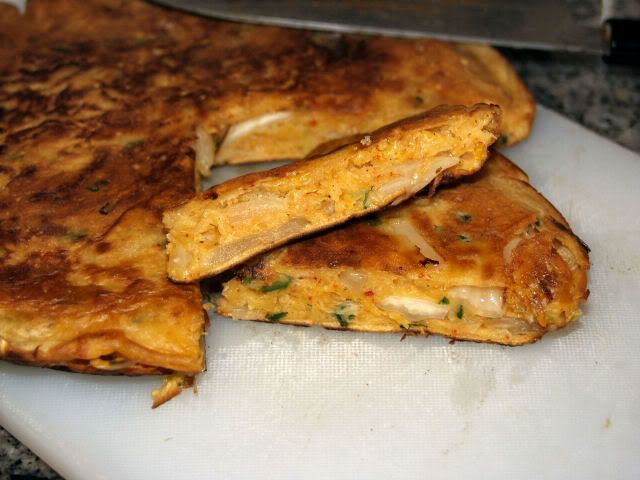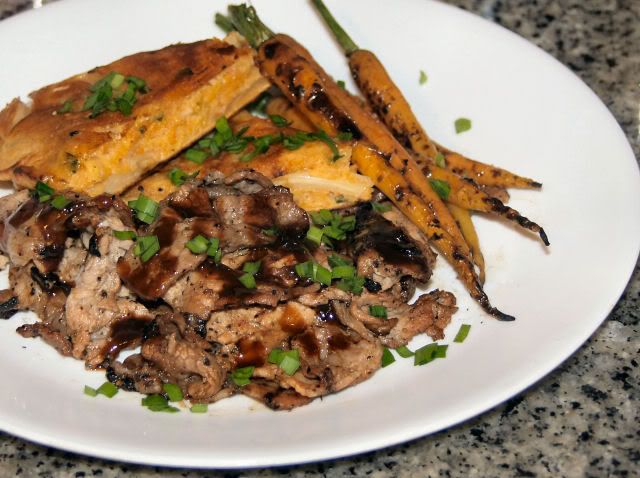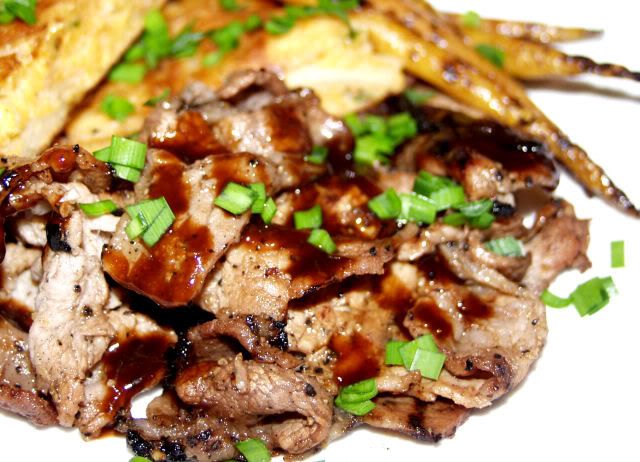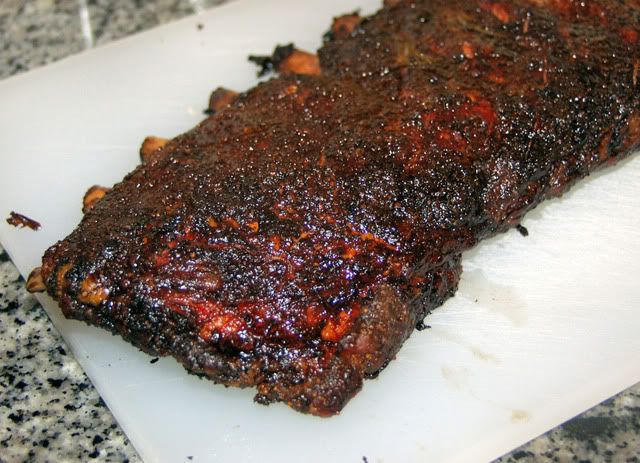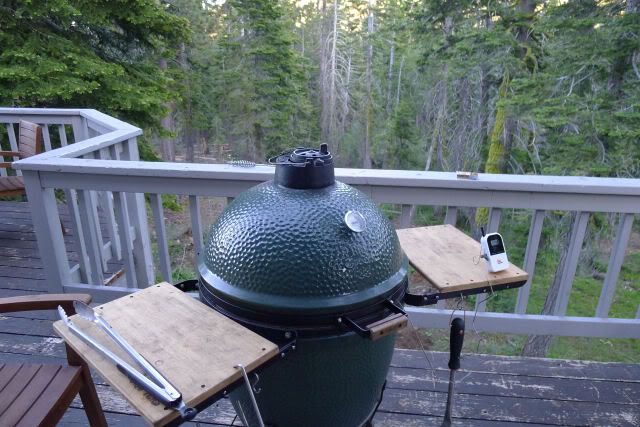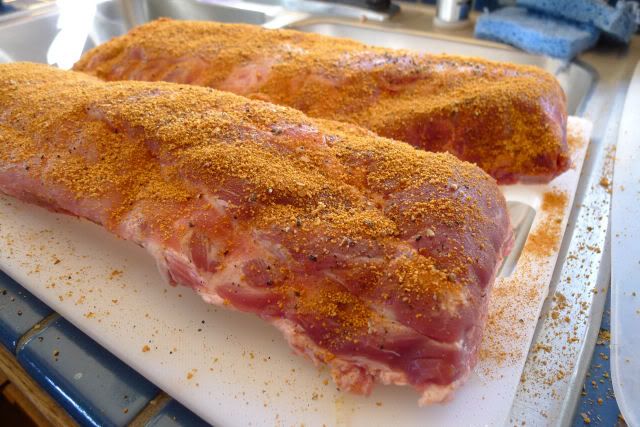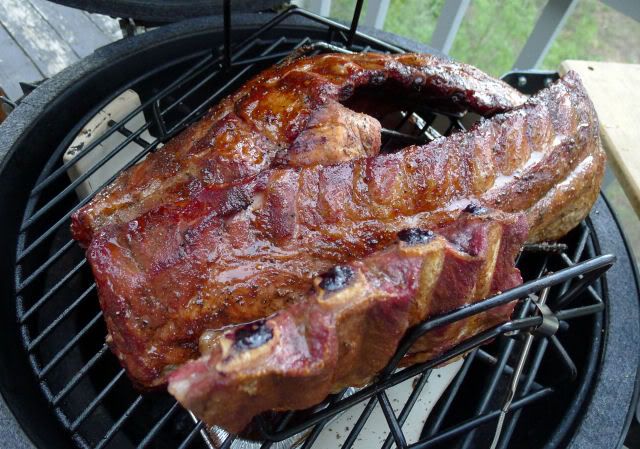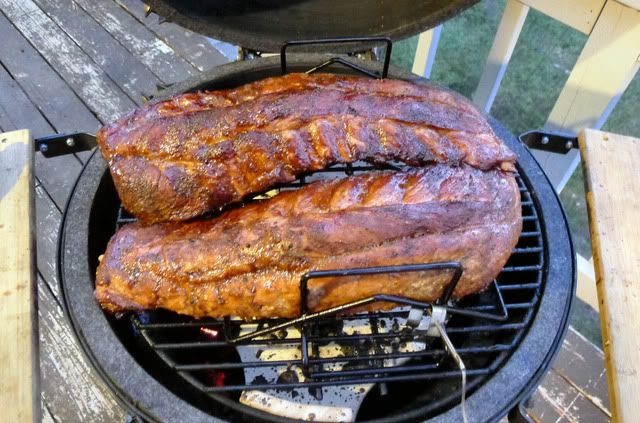Photography courtesy of Rob Bergstrom
Omakase, a term in Japanese that literally means 'it is up to you'. When stated to a sushi chef, it means give me your best and freshest. I believe amongst American Foodies, it has come to mean 'I am a daring and sophisticated eater'. At it's best, I believe it becomes a contract between the diner and chef, that each will play their part in making a memorable dining experience happen. I believe the key to this relationship is to test your own limitations and conceptions about food, to interact and give back to the chef. I think chefs love to cook for people, in the end, being a chef is about feeding peopleand the chef's table is that chance to truly make fine dining a communication to play off of each other.
I recently had the opportunity to 'Walk the Plank' at Lafitte, a restaurant established in San Francisco, and conned by Chef Russel Jackson, he of Subculture Dining fame. And he still seeks to push the envelope of there dining can go, Lafitte has a pirate inspired attitude in it's approach to food and dining, breaking rules where they need to be broken, stealing the moment, when it needs to be stolen. I met my friends Rob and Michael, frequent dining explorers and companions, as well as Michael's friend who joined us as well. Along with ourselves, a batch of sweet kumquats, some Red Boat fish sauce and some Phu Quoc black pepper also made the trip 'down the plank'.
Our first course was to be a Sourdough blini with a Nettle Aioli and sliced Summer Truffles, I considered this to be a bold start, with the nettle puree being added at the last minute to the aioli, the summer truffles being extravagant, and the sourdough blini providing a solid base of flavor for the other elements to play off of. One of the great things about 'walking the plank' is that the food is right there when being prepared.
The nettle puree, as you can see, is quite vibrant, it was spooned next to the aioli, and then a cake spreader painted it across the plate like a palette knife creating an abstract modernist canvas, then the blini and about 1/4 of a truffle each. Hand sliced instead of shaved really gives the truffle a textural role that is mostly missed when it is shaved or chopped. The slightly crumbly/crunchy texture is hard to reconcile to the earthy warm aroma and taste. The soft starchy blini and vegetal nettle each rolling across the palate created complexity. An outstanding and confident opening shot.
A note about first courses, I think many chefs will present a first course that is easily the simplest dish to be served, it allows for building the palate and courses throughout a dinner. The idea of sending out a first course that is really well conceived, deeply complex and beautiful sets a challenge for the rest of the meal. Our pairings were handled with aplomb by the bartender, whose name, unfortunately, I didn't have the good graces to get. And I should have, as she is an excellent mixologist and made some excellent pairings of both wine and cocktails for our dinner. In addition to that, she was engaging and challenging. This is her throwing some attitude at the camera. She provided us with a crisp white wine, if I remember correctly it was a Sauvignon blanc, not my favorite wine, but a great match.
Rob was enjoying a Bloody Mary when I got there, late, again, did I mention, I hate driving in San Francisco, I am late to everything there. Anyway, he was enjoying a Red Boat fish sauce infused Bloody Mary, did I mention the bartender was good, real good? It was excellent stuff.
The second course, traditionally a soup course was to be an eye opener for me. One of the reasons I dine out is to try out what chefs are doing, to seek out how other people are seeing food and crafting their vision in the kitchen. I can cook very well at home, and wouldn't suffer if I had to eat my own food. But, from time to time, I run across someone who redefines what an ingredient or cooking can be. A chef that is not just assembling food, but, is crafting a vision, is really cooking. Here is where Chef showed me his chops, he understands his ingredients and techniques. If this were a sea battle, I just lowered my colors. Here are the two main ingredients of the second course, one is easily identified, foie gras and the second, a perfectly smoked pork belly strip.
Yes, that is pork belly, not fat back, and it is from an Iberico pig. It was perfectly smoked and yet, it is a hunk of fat. I am no fan of foie gras or raw pork fat, I find them to be two textures that are just to much for me. But, like I said, I was about to be taken to school. In these bowls, are the smoked pork belly, some raw peas, barely cooked potatoes and a stuffed squash blossom, with the goat cheese infused with Phu Quoc black pepper that we had brought for Chef.
And that broth being poured into the bowls, well, it was something special, Chef never actually revealed what it was, but, it had a definite duck flavor, and the color was rich, I had seen some duck confit, so my guess is that it was a duck confit poaching liquid which was used to briefly poach the foie gras. Each bowl got a slice of meltingly tender poachedfoie gras to finish.
Not a huge portion, but, this is a slice of foie gras, over a slice of smoked pork belly with a deep fried squash blossom on top and draped with duck confit broth, do you need more than this? Is there something wrong with you? Nobody should eat something this rich. And the lesson, each element of this dish rocked, alone, with it's neighbors and as a whole. The foie gras was transformed, ephemeral in texture, delicate in flavor and perfectly balanced by the smoke of the pork fat. And let me just add, as someone that has been smoking meat for over 30 years, this pork belly was perfect, this was the finest smoked soup element I have ever encountered. Smoke can become cloying, even over powering in soup very quickly, this never happened with this soup. And, the smoke was gone just as soon as the dish was gone. Perfect.
Above was course three, a pasta course and something that initially felt a little our of sorts. It was classic, perfectly classic. Did it have Red Boat in it? I sort of don't think so, although it would have been perfect for it. It was like the jazz musician who deftly weaves a little riff of classical music into a performance, as if to say 'yep, I can do that too'. This was pasta cooked al dente, with capers and herbs, a light tomato sauce, simply presented. Oh, and it lead to my getting a shot that I love, as I love knives, and Chef uses aWa-petty, a Wa-gyuto and a Wa-santoku for his prep work.
And now on to the fourth course, which would be a course featuring salmon, I do not eat salmon, In particular, I do not like the texture of salmon skin and the fat along the skin. What can I say. But, there is that tacit agreement of omakase, oh what to do. Well, you have to try things. And I did notice that the salmon was beautifully prepared, with just the thin top half of the skin, the fatty horrid white part of the skin was gone. Braised greens, a light olive oil and a serious sear on the salmon, this seemed to be the plate, but, wait, is that a bottle of Red Boat (yes, we brought a bottle).
Amazingly, Chef seemed to have a plan, he seemed to know that this sauce would go great dressed onto the salmon. How do great cooks have these kinds of instincts? He actually poured it over the salmon just before serving. The salmon skin remained crisp, according to everyone else who ate it. The salmon was actually good, the braised greens and excellent complement and the fish sauce unobtrusive, yet, providing a subtle reinforcement to all the flavors.
And to match the salmon, a surprise, as we had all expected the standard play, the Pinot gambit, but, our barkeep had other plans, she brought out the house cocktail, a Rio Nueovo, but, augmented boldly with the sweet kumquats we had brought along. The cachaca used in the drink was hand made, and signed by the maker. This was my second of these cocktails, but, the first one with the sweet kumquat, which changed the drink considerably, and I think for the better. This cocktail was all about impressive sourcing, along with a little elderberry syrup, this cocktail rocked with the salmon.
Oh, and it is a little known fact, but, it is critical that all 'cooks of the line' must be perfectly seasoned for the kitchen to work well. Here Chef is making fine seasoning adjustments.
On to course five, and course five was worth the wait, I learned of a cut of meat that has somehow escaped my knowledge thus far. It turns out, if you actually butcher a hog, you find a small part of the tenderloin that is along the rib cage, it is inconveniently shaped and ends up as trim. This is the most tender cut of pork I have ever had. It was marinated in Moroccan spices and served over puy lentils. It was an earthy and rich presentation, with the medium rare pork sitting atop, grilled perfectly and so tender.
The pairing to go with this dish was a earthy red wine, perfect for the dish. I am afraid that by this time, I was paying scant attention to the pairings, the food was just holding my attention completely at this point. The descriptions notwithstanding, I am more of a visceral eater, when I am eating truly fine food that holds my attention like this, I drop the idea of 'what I know' and give myself to the experience. This food fully realized what I had hoped for, I figured dessert would be anti-climatic. But, then she pulled out the port. I love port. In this case, a 10 year old Dow's Tawny. And this means chocolate.
And yet one more last shot across my 'all knowing bow', a simple chocolate souffle. How unremarkable, I mean who doesn't do souffle, weee, eggy chocolate. Well, I have the port.
And so, after the first fork, I realize, this is some danged good souffle, the chocolate is so delicate and floral. In general, I can call the chocolate in a dessert. No kidding, I often get the chocolate down to the brand, sometimes even the source. This was nothing I knew and it was pure chocolate in expression. The pastry chef nailed her craft on this one. She said it was TCHO chocolate, this is something I will need to seek out. It was spectacularly fruity and delicate. I am not at all sure that it was not how she prepared the souffle, but, it was a singular end to an excellent and enjoyable meal. The port was a perfect pairing with it.
This meal would be memorable however because of how Chef and the kitchen and staff would interpret and present the ingredients for our dining. Now, one thing to note, almost without exception, all of us have foods we love, and foods we dislike, these can certainly affect our choices in how we react to food. This can be a limitation when choosing from a menu, but, when sitting at chef's table and asking him to cook at his whim, you must relinquish those tastes and try whatever is presented, after all, this is what 'omakase' is all about.
Search This Blog
Sunday, July 31, 2011
Saturday, July 30, 2011
Mmm, Taiyaki
I love taiyaki, those odd little confections from Japan in the shape of a sea bream, but actually with no fish flavor at all. They are a mix of a pancake-like batter with a sweet filling, often a sweet bean filling make from Azuki beans. As a child, sometimes when we left the California Flower Market and there was time, we would drive out to Benkyodo, where they had a taiyaki grill. They would make them fresh throughout the day and you would get a large, crispy pastry filled with warm bean paste. They were so good. Today, I happened to be near a store in San Mateo that makes tiny ones in both the azuki filling and other flavors more modern than the old azuki bean flavor. I got some azuki (my old friend) and some caramel-coffee (just had to try). I still love them, even is they are not 'authentic'.
Of late, I have been giving a lot of thought to 'authentic' foods, as to the meaning of traditional, authentic or original as it applies to food and cuisine. These little guys are cooked by Japanese guys, using Japanese tools, with Japanese flavor, but, I wonder, is it authentic or traditional? What makes a certain food or cuisine authentic?
I know this, this was authentic for me today, as authentic and traditional for me as it was when I was a 5 year old boy walking with my dad and my hot 'goldfish donut'.
Of late, I have been giving a lot of thought to 'authentic' foods, as to the meaning of traditional, authentic or original as it applies to food and cuisine. These little guys are cooked by Japanese guys, using Japanese tools, with Japanese flavor, but, I wonder, is it authentic or traditional? What makes a certain food or cuisine authentic?
I know this, this was authentic for me today, as authentic and traditional for me as it was when I was a 5 year old boy walking with my dad and my hot 'goldfish donut'.
Friday, July 22, 2011
An interesting moment in the life of a food person...
I had reason to chance by the restaurant Gather in Berkeley today. This is one of the hottest restaurants, with one of the most innovative chefs and I was there at lunch service. It also happens to be across the street from U.C. Berkeley, my alma mater. I don't get into Berkeley that often, and never near campus, as I drove there, I see Top Dog...hmmm...Gather? Top Dog? Fine Cuisine or grab a flat-topped sausage on a bun... It was like a time machine, I was back in college, standing on the street eating a grilled bock with hot kraut and spicy mustard.
Wednesday, July 20, 2011
Korean pancake riff...I add beef!
Inspired by a comment from Mai of Flavor Boulevard and her question about why neither of us has ever seen a Pajeon made with meat in it, other than crab, I decided the best thing was to try it.
To start off, I considered how to proceed with the batter. Do I add the cold meat to the cold batter and cook as if it is a regular pajeon, or should I saute the meat and green onions first then pour batter over it. Both ways could work, but, since I am wanting a well integrated end product, I am going for all one batter. I decided to go with this recipe. I could go into why three flours, the better crumb of pastry flour and the better rise of bread flour blah blah blah...I ran out of All-purpose flour. Milk instead of water for texture is a bit of an experiment.
Flippage did not go so well, I am not sure what happened, but, I reinjured my already strained wrist and flipping a cast iron skillet was not in the cards today. Spatulas are not so effective. Oh well, taste will still be good. Here is the texture, which was tender, moist and just chewy enough to be satisfying. In terms of overall flavor, I think I will do this again, but, there will need to be a few changes. I think the beef needed a stronger flavor and I may just go with a less integrated method of batter construction. There is real potential here.
Kimchi Pancake
1/2 Cup bread flour
1/2 cup pastry flour
1/3 cup rice Flour
1/8 cup chopped kimchi (all I had left)
2/3 cup chopped bulgogi flavored chuck ribs
3 stalks green onions, chopped
1 cup milk
1 Egg
1-1/2 teaspoon palm syrup
1/2 teaspoon baking powder
a few dashes of Red Boat Fish Sauce
Mix dry ingredients, Premix liquids and add, mix to pancake consistency, add chopped kim chee and scallions, mix until pancake batterish. Fry until edge is dry, then flip and finish. I wish someone was here when I flipped this, it was a thing if daring and beauty. Once this was done, it was time to plate. First, a little slicing and a look at the texture of the pancake.
Tuesday, July 19, 2011
Korean Chuck Ribs
Not exactly Galbi or Bulgogi, but, showing off some of that sweet/salty flavor profile. I decided to play with the coconut palm syrup I recently picked up. I decided that some butterflied beef short ribs were in order. First, I made a marinade of the following items, roughly measured (which really means, not measured).
Beef Rib Marinade
1 lime, juiced and half rind julienned
1/4 cup Coconut Secret coconut palm syrup
4 tablespoons Red Boat Fish Sauce
1/8 cup Victorino coconut white balsamic vinegar
2 tablespoons rice wine vinegar
1 tablespoon Red Boat black pepper, ground
1/2 pear, diced
4 cloves garlic
5 green onions diced
1 tablespoon ginger, crushed
All of this was prepared and combined in a blender, given a few quick pulses to combine and mash things up a bit. This was then poured over the beef. I was able to get some really good beef chuck ribs, which the butcher cut into thirds for me. These were then butterflied and given some quick work with the tenderizing mallet.
Here is the beef in the marinade, which you can see has a bit of a chunky texture. The beef sat in the marinade for two hours. I would consider this minimal and it could probably go a lot longer. This marinade is very rich in flavor and sugar so the flavors work into the meat quickly.
From here it was onto the grill, from here is where things went badly. I did something I have not done in a very long time, I burned it. I burned meat on the grill! Oh the shame! Well, that may be a bit dramatic, it was pretty toasted on one side. (note to self, make sure the lid on kettle is on kettle and not cocked over on handle). Here is the carnage, well the carne I guess.
Ah well, the aroma despite the blackening was amazing, there is nothing quite like getting the aromatics right and hitting it with a touch of flames. Here is another shot, showing the shine the palm syrup lent. This meat was really amazing both on the grill and on the plate.
And finally, the plated food. I decided to use up the kimchi from last weeks adventures as well as grilling up a few of the green onions while I was burning the meat. Grilled green onions, if you have not tried it, is one of the best accompaniments to grilled meats you can imagine, with a sweet/savory profile and a little onion snap. I just coat with olive oil and onto the hot fire. Then some jasmine rice and this was a real treat for the sense of smell and taste.
The flavor of the coconut palm syrup was very complex and sweet, with some caramelized flavors as well as the sweetness. The texture is similar to maple syrup and I can see how this will become a valuable addition to my kitchen arsenal. It is a natural complement to the lime, fish sauce and meat flavors. I see some competition style ribs in it's future.
Beef Rib Marinade
1 lime, juiced and half rind julienned
1/4 cup Coconut Secret coconut palm syrup
4 tablespoons Red Boat Fish Sauce
1/8 cup Victorino coconut white balsamic vinegar
2 tablespoons rice wine vinegar
1 tablespoon Red Boat black pepper, ground
1/2 pear, diced
4 cloves garlic
5 green onions diced
1 tablespoon ginger, crushed
All of this was prepared and combined in a blender, given a few quick pulses to combine and mash things up a bit. This was then poured over the beef. I was able to get some really good beef chuck ribs, which the butcher cut into thirds for me. These were then butterflied and given some quick work with the tenderizing mallet.
Here is the beef in the marinade, which you can see has a bit of a chunky texture. The beef sat in the marinade for two hours. I would consider this minimal and it could probably go a lot longer. This marinade is very rich in flavor and sugar so the flavors work into the meat quickly.
From here it was onto the grill, from here is where things went badly. I did something I have not done in a very long time, I burned it. I burned meat on the grill! Oh the shame! Well, that may be a bit dramatic, it was pretty toasted on one side. (note to self, make sure the lid on kettle is on kettle and not cocked over on handle). Here is the carnage, well the carne I guess.
Ah well, the aroma despite the blackening was amazing, there is nothing quite like getting the aromatics right and hitting it with a touch of flames. Here is another shot, showing the shine the palm syrup lent. This meat was really amazing both on the grill and on the plate.
And finally, the plated food. I decided to use up the kimchi from last weeks adventures as well as grilling up a few of the green onions while I was burning the meat. Grilled green onions, if you have not tried it, is one of the best accompaniments to grilled meats you can imagine, with a sweet/savory profile and a little onion snap. I just coat with olive oil and onto the hot fire. Then some jasmine rice and this was a real treat for the sense of smell and taste.
The flavor of the coconut palm syrup was very complex and sweet, with some caramelized flavors as well as the sweetness. The texture is similar to maple syrup and I can see how this will become a valuable addition to my kitchen arsenal. It is a natural complement to the lime, fish sauce and meat flavors. I see some competition style ribs in it's future.
Monday, July 18, 2011
Palm Sugar
I found some interesting ingredients on my recent foray to Humboldt, there are a couple of stores there that seem to always have interesting ingredients I just don't easily find here. I found coconut sugar that does not need softening or grating, and some coconut palm syrup which could be used as a syrup alternative. It is a common syrup for desserts in Southeast Asian cuisines, but, I am thinking it might substitute for honey.
I am thinking this could add some interesting flavor to my Pig Honey and for Competitions style ribs as well. I guess I need to do some ribs soon.
I am thinking this could add some interesting flavor to my Pig Honey and for Competitions style ribs as well. I guess I need to do some ribs soon.
Friday, July 15, 2011
Pineapple Spam Fried Rice
First there is the smoked Spam, the essential ingredient and cultural icon of Hawaii gets a BBQ spin with a hour and a half in the kettle, over apple wood and citrus wood charcoal, some briquettes thrown on for fun. I rubbed the Spam with a salt free Dizzy Dust rub, I mean, there is no need to add more salt to Spam. Here it is, and I might add, Spam looks more delicious smoked
This was allowed to rest overnight, let the smoke settle in while I ate other stuff. Note the bacon? Yes, applewood bacon. Next are the aromatics and spices, chopped onions, celery, lemon zest, Red Boat black pepper, garlic chives and some chile powder.
The onions and celery were sauteed in the wok until translucent. Then the meat, comprised of a little bit of smoked Spam and some crumbled bacon were added and heated through. The rice, a jasmine rice from Thailand was cooked then cooled on a bamboo mat, as drier cool rice makes for a better friend rice. I slightly undercooked the rice to get the right texture and to prevent it breaking down in the wok. The cooling on a bamboo mat or strainer allows for air circulation and prevents mushiness, this also works great for noodle to be fried.
The rice was tossed into the wok and tossed a few times to heat through. Then I added the spices (shown above) to season it all up. I then added a flavoring blend of 1 teaspoon each of Red Boat Fish Sauce, Liquid Amino Acids and Japanese Worcestershire sauce. Anyone who has followed my cooking knows it is all about layers of flavors and playing the idea for raw or crispy off of cooked and tender, so the final additions were some chopped kimchi and come fresh pineapple chunks.
The whole mixture was tossed in the wok for a minute then loaded into a bowl, obviously there was far more than one serving. Some was tossed in a bowl and topped with a fried egg.
Take a look at that egg and the mixture underneath. Yes, a fried egg, sunny side up, no I am not worried about getting food poisoning. Another beauty shot.
The egg I got from my sister's chickens, the rich yellow yolk and see how it stands up, you know that is a good egg. I like to add the egg to the top and then let the yolk flow down and flavor the rice. As a child, I hated raw yolk, but, now, I love the warmed yolk on hot rice, there is something about the richness of the yolk and how it sits on rice that is just perfect.
Thursday, July 14, 2011
Viet-inspired Pork and Kimchi Pancake
Oh my, this time he is all over the map, yes indeed. I went to the Japanese food store and found some great groceries, which gave me an idea. Actually, several ideas came up, so I bought quite a varied selection of things. Including Spam. Here are the groceries.
Hey! What is that I see...
Yes, I bought a small package of Macadamia Nut Chocolates. Yes, I have the self-control of a 3 year old. What can I say. Oh well, back to dinner. Pork inspired by the flavors of Vietnam, minus the lemongrass, which I could not get at the Japanese food store, but, I got garlic chives, time to riff I suppose. This particular store always has great thinly sliced kurobuta pork all ready for use. I bought a couple of packs to be marinaded in this stuff.
I know, what is all that stuff? Well, here is the recipe...
Viet-inspired Pork marinade
Hey! What is that I see...
Yes, I bought a small package of Macadamia Nut Chocolates. Yes, I have the self-control of a 3 year old. What can I say. Oh well, back to dinner. Pork inspired by the flavors of Vietnam, minus the lemongrass, which I could not get at the Japanese food store, but, I got garlic chives, time to riff I suppose. This particular store always has great thinly sliced kurobuta pork all ready for use. I bought a couple of packs to be marinaded in this stuff.
I know, what is all that stuff? Well, here is the recipe...
Viet-inspired Pork marinade
1.5 lbs boneless pork chops
2 teaspoons freshly ground black pepper
1.5 tablespoons minced garlic
1 halved lime rind
3 tablespoons Red Boat Fish Sauce
1 medium-sized sweet lime (squeezed to obtain juice)
1 medium lime (squeezed to obtain juice)
3 tablespoons turbinado sugar
2 kaffir lime leaves
1 teaspoon sesame oil
Pretty straightforward here, just combine and add pork. Allow to marinate for 2 hours. At this point, it is just going to go on a very hot grill and cook until the pork is done and a little charring shows up.
While the pork was marinading, I set up the kettle with lump and some Royal Oak briquettes to get it all fired up. I happened to smoke some Spam at this time, but, that is another story all together. I did prepare the batter for the kimchi pancake and some baby carrots for grilling as well. The carrots just got a good scrubbing, some olive oil and a sprinkling of Red Boat Black Pepper and some smoked salt. These went straight to the grill over the hot charcoal for just a few minutes. I hate over-cooked carrots.
On to the kimchi pancake, this is something I learned about just a year ago, not sure how I can have been eating in Korean restaurants for years and never had this dish, I can barely stop eating when I order it. Here is what I did...
Kimchi Pancake
1 Cup All Purpose Flour
1/3 cup Rice Flour
1 Cup Well Fermented Kimchi, chopped in 1” chunks
4 stalks garlic chives, chopped
1/3 Cup Kimchi Broth
2/3 Cup Water
1 Egg
1-1/2 teaspoon Sugar
1/2 teaspoon baking powder
1/8 teaspoon salt
Mix dry ingredients, Premix liquids and add, mix to pancake consistency, add chopped kim chee and scallions, mix until pancake batterish. Fry until edge is dry, then flip and finish. I wish someone was here when I flipped this, it was a thing if daring and beauty. Once this was done, it was time to plate. First, a little slicing and a look at the texture of the pancake.
The plating was just a matter of getting a couple of the slices from the pancake, a few slices of the pork and some carrots on the plate. I think this ends up being a decent plate of food. I normally would not each this much starch, but, like I said, I love kimchi pancakes. Oh, I added a little Tonkatsu sauce to add another layer of flavor to the plate.
The pork was grilled nicely, very tender as could be expected from the kurobuta sourcing and with a lovely salty/sweet flavor profile with the expected herbal and umami flavor that forms the backbone of many Southeast Asian foods. The black pepper was much more subtle than I expected, while the caramelized portions of the meat and carrots spoke of live fire. And, I think this kimchi pancake recipe was very close to what I wanted it to be. I think I will add more liquid and make the pancake a little thinner next time.
Just a parting shot of a really nicely cooked pork dinner inspired by the flavors of Vietnam, with support from Korea and Japan. Actually, this would also have gone very well over rice or rice noodles as well.
Wednesday, July 13, 2011
Pig Honey Marinade and Spray
I am rewriting a post from Bob's Brew and Que, as I believe it is an excellent example of what I intend the direction of this blog to be. It is the recipe and process of Pig Honey. This is an early attempt, on my part, to use the benefits of fish sauce and the umami it imparts to the traditional rib cookery more familiar to American palates. I wanted to take advantage of the focus in Asia in the umami flavor while using ingredients and flavors that could be difference makers in my cooking.
As you can see above, the combination of ingredients really adds a fine glaze and some interesting colors to a rack of ribs. Although originally called Pig Honey, I found this marinade and 'mop' worked great on chicken.
Initial reports from other cooks is that the sugar profile was a little light and they did not get quite the same level of glazing. As stated previously, this is just a starting point for what I believe will become a versatile flavor tool in my continuing efforts to bridge my ideas of what Pacific Rim BBQ will be about.
Pig Honey Sauce
1 cup apple juice
1/4 cup Red Boat Fish Sauce
1/4 cup Braggs Amino Acids
1/8 cup Honey
1 Tablespoon turbinado sugar
Combine all ingredients and bring to just short of a boil, maintain heat until sugar is dissolved. See above for use. I believe it is important not to boil this mixture as I believe the boil process will cause the proteins to denature and not function in the manner I want it to work. I have also become aware of the loss of character that fish sauce can suffer when excessively boiled. I am starting to think it needs to be added late in the cooking process, although I have not discussed this with any scientists.
As you can see above, the combination of ingredients really adds a fine glaze and some interesting colors to a rack of ribs. Although originally called Pig Honey, I found this marinade and 'mop' worked great on chicken.
Initial reports from other cooks is that the sugar profile was a little light and they did not get quite the same level of glazing. As stated previously, this is just a starting point for what I believe will become a versatile flavor tool in my continuing efforts to bridge my ideas of what Pacific Rim BBQ will be about.
Pig Honey Sauce
1 cup apple juice
1/4 cup Red Boat Fish Sauce
1/4 cup Braggs Amino Acids
1/8 cup Honey
1 Tablespoon turbinado sugar
Combine all ingredients and bring to just short of a boil, maintain heat until sugar is dissolved. See above for use. I believe it is important not to boil this mixture as I believe the boil process will cause the proteins to denature and not function in the manner I want it to work. I have also become aware of the loss of character that fish sauce can suffer when excessively boiled. I am starting to think it needs to be added late in the cooking process, although I have not discussed this with any scientists.
Monday, July 11, 2011
Smoked Ribs with Pacific Rim Mop
This past weekend, I had the opportunity to spend some time in Lake Tahoe at a friends mountain home, everyone needs a place to get away, and this is Rob's place to go hide from the world and think. This past weekend, we thought about ribs, slow smoked and tender.
I even got to cook on a Big Green Egg, Rob has a large BGE at his Tahoe retreat and this was the first chance I had to cook on one of these. They have become increasingly popular, even as they are quite pricey for many of us, I can really see why they are so popular. This cooker is very responsive, very stable on temperature and used very little fuel. It was a real treat.
I decided to continue playing with my original idea of Pig Honey, but, to throw a few more elements into the recipe. Even more so, cooking with Rob ends up being a collaboration. We started with extra meaty baby back ribs, stripped the membranes and rubbed with Simply Marvelous Cherry Rub. This is a classic sweet and spicy BBQ rub, a little more on the sweet side, but, that was perfect for my plans.
Now, here is where things get a little more exotic, not super exotic, just a little more. After putting the ribs on the BGE, with some lump charcoal and a few pieces of apple wood for smoke, I made some modified Pig Honey, in this case, to be used as a mop and glaze. The overall flavor range would be dominated by the savory additions of fish sauce and liquid amino acids along with some seasonings, including an incredible pepper blend called Mayan Pepper Blend. This features some old pepper varieties grown in Belize, hand harvested, roasted over open fires and flaked. This mix has an amazing smoky pepper aroma and quite a bite.
Pacific Rim Rib Mop
1/4 cup plus 3 tablespoons of Red Boat Fish Sauce
1/4 cup scant of Bragg's Liquid Aminos
1 teaspoon of smoked pepper flakes
1 teaspoon of smoked paprika
1 teaspoon Phu Quoc black pepper
1/8 cup brown sugar
The last five ingredients were brought to a low simmer to dissolve sugar. The heat was turned off and the fish sauce added. This was used to mop the ribs at the 2 hour mark, then it was mopped every half hour until done.
The last two moppings were also dusted with a finely grated palm sugar, to create a glaze. The palm sugar is actually a product of a form of Palmyra palm, although sugar from other palms is often used as well. We used the refined version of this sugar, which comes in the form of small, hard cones which need to be softened or ground prior to use. I chose to grind it into a fine powder, which I then sprinkled onto the ribs as they were mopped with the mop sauce.
The photo above shows the glaze effect pretty well, but, both racks actually had a great shine and the flavor was incredible. More importantly, they has in incredible depth of flavor, with the Mayan peppers ringing through with bright heat, and the palm sugar and residual sugar from the mop providing a balancing sweetness. The aromatic combination of all of these elements was just enticing, no other word works to describe it.
I even got to cook on a Big Green Egg, Rob has a large BGE at his Tahoe retreat and this was the first chance I had to cook on one of these. They have become increasingly popular, even as they are quite pricey for many of us, I can really see why they are so popular. This cooker is very responsive, very stable on temperature and used very little fuel. It was a real treat.
I decided to continue playing with my original idea of Pig Honey, but, to throw a few more elements into the recipe. Even more so, cooking with Rob ends up being a collaboration. We started with extra meaty baby back ribs, stripped the membranes and rubbed with Simply Marvelous Cherry Rub. This is a classic sweet and spicy BBQ rub, a little more on the sweet side, but, that was perfect for my plans.
Now, here is where things get a little more exotic, not super exotic, just a little more. After putting the ribs on the BGE, with some lump charcoal and a few pieces of apple wood for smoke, I made some modified Pig Honey, in this case, to be used as a mop and glaze. The overall flavor range would be dominated by the savory additions of fish sauce and liquid amino acids along with some seasonings, including an incredible pepper blend called Mayan Pepper Blend. This features some old pepper varieties grown in Belize, hand harvested, roasted over open fires and flaked. This mix has an amazing smoky pepper aroma and quite a bite.
Pacific Rim Rib Mop
1/4 cup plus 3 tablespoons of Red Boat Fish Sauce
1/4 cup scant of Bragg's Liquid Aminos
1 teaspoon of smoked pepper flakes
1 teaspoon of smoked paprika
1 teaspoon Phu Quoc black pepper
1/8 cup brown sugar
The last five ingredients were brought to a low simmer to dissolve sugar. The heat was turned off and the fish sauce added. This was used to mop the ribs at the 2 hour mark, then it was mopped every half hour until done.
The last two moppings were also dusted with a finely grated palm sugar, to create a glaze. The palm sugar is actually a product of a form of Palmyra palm, although sugar from other palms is often used as well. We used the refined version of this sugar, which comes in the form of small, hard cones which need to be softened or ground prior to use. I chose to grind it into a fine powder, which I then sprinkled onto the ribs as they were mopped with the mop sauce.
The photo above shows the glaze effect pretty well, but, both racks actually had a great shine and the flavor was incredible. More importantly, they has in incredible depth of flavor, with the Mayan peppers ringing through with bright heat, and the palm sugar and residual sugar from the mop providing a balancing sweetness. The aromatic combination of all of these elements was just enticing, no other word works to describe it.
Subscribe to:
Posts (Atom)
